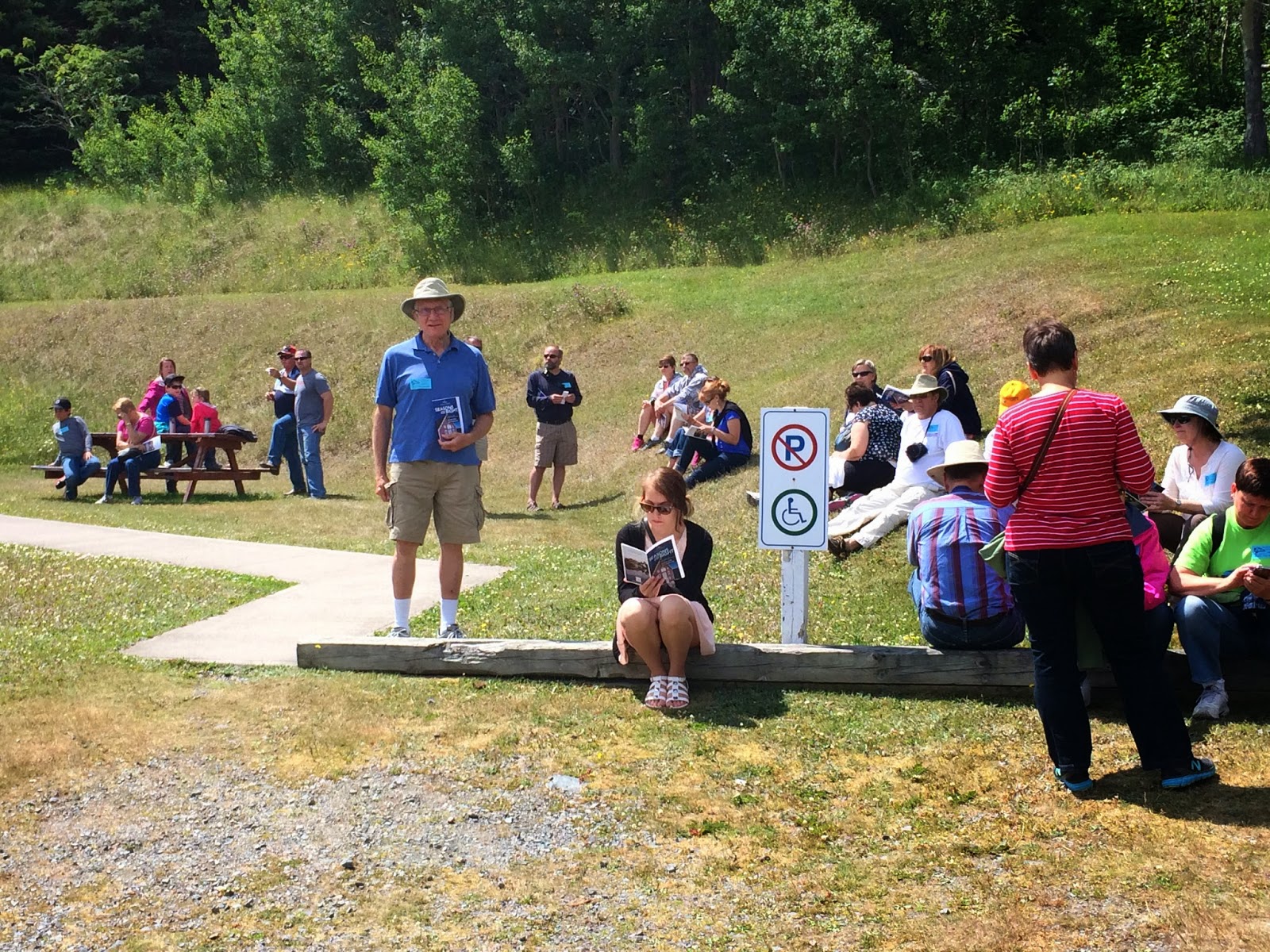Portuguese explorer Gaspar Corte-Real, the first recorded visitor to Trinity, sailed into its harbor on Trinity Sunday, in 1501, during his circumnavigation of Newfoundland. English settlement came much later, in 1558, almost 30 years before Sir Humphrey Gilbert landed in St. John's and claimed Newfoundland for England in 1583.
Trinity was once a prosperous and progressive fishing community. In the early 1700's it was frequently raided by pirates and captured twice by the French. To defend themselves, the settlers built fortifications, remains of which can be seen along the coast. Another historic structure in town is St. Paul's Church, built in 1892. Dr. John Clinch, who was also a pastor, is buried in the churchyard. During the late 1700's he administered the first Jenner smallpox vaccination in North America.
But, in the summer, it is theatre that draws people to Trinity. The high comedy, farce and drama of Newfoundland and Labrador's history take to the streets for the New Founde Lande Trinity Pageant. This is a walking tour of the town led by actors portraying a few of the more outrageous characters from the not-too-distance past. Rising Tide Theatre also presents Seasons in the Bight at its modern waterfront theatre. In addition to participating in the Pagent, we also stayed for the evening Dinner Theatre.
Before we left for Trinity I took this picture of the RV that was parked next to us. Notice the lobster trap on the roof. This is not the first one we have seen traveling down the road. Some people fish, some trap lobsters.
Trinity harbor is beautiful with arms that extend in the large harbor. This one had a natural bridge.
We drove out to the lighthouse/fort that is located at the tip of one of the arms that guards the entrance to the harbor. Along the road we stopped to look at the icebergs that we had seen the day before on the Skerwink Trail. As we were watching, a small piece of the iceberg broke off and that left an unstable pillar of ice and soon the whole exposed upper block of ice broke apart and crashed into the water. The picture above shows the remains spread out in the water.
The working lighthouse located at Fort Point. We took the 1+K hike around the point.
The canons that remain at Fort Point.
A beach, below the lighthouse, with capelin on it where they breed and more capelin in the water. This is what draws the whales who feast on the capelin.
A sea stack, know as The Naked Man (?) along the shore of the lighthouse.
Folks gathering in the garden of the Visitor's Center for the beginning of the Trinity Pageant.
Tavenor (on the left) and Matey who acted as guides for the various vignettes. We began and ended the Pageant by everybody singing The Ode to Newfoundland.
The audience walking from scene to scene throughout the Village.
A couple of actors acting out a scene.
More walking through the Village. As we were walking along we noticed this house on the hill that looked like a face.
This is a sad scene telling of the Trinity Sealing Disaster of 1892. One clear spring morning a herd of seals floated into the barbour on pans of ice. 200 fishermen climbed into small boats to take advantage of the unexpected bounty and rowed almost nine miles out into the bay. Working hard to make the ice, some stripped out of their sweaters to cool off. Then, with absolutely no warning, a bitterly cold north-eastern gale arose, spraying the men with water that froze to their bodies as they rowed. In all 25 men and boys died, some on route, more succumbing to exhaustion on the shore. Outside St. Paul's Church, Mary Moores is unwilling to accept her husband's fate. We then went inside the Church where the Reverend Weaver was depicted trying to comfort his flock.
Incongruity - right across the street from St. Paul's Church was this very modern scene of a beach volleyball game.
The end of the Pageant was a garden party by the Visitor's Center. There are five men on the hill waving the flags.
About an hour after the Pageant we went to the Dinner Theatre where photos were not permitted. We had cod for dinner and after dinner there were 23 different songs, monologues, little playlets and at the end, Mummers*. It was very enjoyable and very Newfoundland.
*A Newfoundland custom of neighbors visiting neighbors on December 26, or at other times during the Christmas season. They disguise themselves with old articles of clothing and cover their faces with thick veiling to hide their identity. Very often there was cross dressing with men, especially, dressed in women's clothing.















Very nice lighthouse Sis.
ReplyDelete